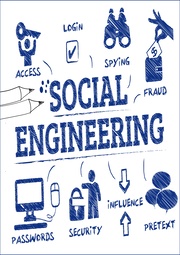Baby Wrap vs. Baby Sling – Which one should you choose for your little one?
Exploring the world of parenthood can be exhilarating yet daunting, especially when it comes to choosing the right gear for your little one. One dilemma that new parents often face is the choice between a baby wrap and a baby sling. With both promising the ultimate closeness and comfort for your newborn, the decision becomes as crucial as it is puzzling.
Don’t worry, you’re not alone in this maze of choices! As a mom who’s been there, done that, let me share a little nugget of wisdom that might pique your interest: did you know that babywearing not only soothes your little one but also promotes a stronger emotional bond?
Babywearing has been scientifically proven to enhance baby’s sense of security and facilitate infant-parent bonding.
Picture this: your newborn, snugly nestled against your chest, feeling the rhythm of your heartbeat and the warmth of your touch. That closeness is not just heart-meltingly adorable; it’s also proven to reduce fussiness, provide the stimulation for early cognitive development, help to regulate their body temperature, and even improve sleep patterns.
In this article, we’ll unravel the mystery of two types of baby carriers that are most comfortable for newborns: baby wrap vs. baby sling. We’ll analyse their features, pros, and cons. By the end, you’ll have the knowledge to make an informed choice, ensuring that your baby’s early experiences are wrapped in the warmth of love and security.
What is the difference between a baby wrap and a baby sling?
Both wraps and slings are incredible products designed to keep your little one close, while allowing you to embrace the world of parenthood with open arms. It ultimately boils down to your lifestyle, preferences, and, of course, your baby’s comfort.
I encourage you to check out this article with a comparison of Solly Baby vs. WildBird (the most popular wrap and ring sling) – it will help you choose the right baby carrier for your newborn.
Now, let’s demystify the world of baby wraps and slings together, considering the key features that truly matter when making this important decision for your newborn baby.
1. Comfort and support
First and foremost, let’s talk about comfort.
Wrap
A baby wrap, oh, it’s like wrapping your baby in a cozy, soft cloud of love! It’s made of stretchy fabric that molds perfectly to your and your baby’s body, providing optimum support. The even weight distribution ensures you can wear it for hours without feeling strained.
Ring sling
Baby slings, on the other hand, are typically made of sturdy fabrics and offer a slightly structured design, distributing your baby’s weight across your shoulder and hip. Ring slings for newborns, in particular, provide a snug fit that mimics the feeling of being in the womb, promoting a sense of security for your little one. They’re great for quick in-and-out situations, offering good support while keeping you mobile.
2. Baby wrap vs. ring sling – which one is easier to put on?
Let’s talk about the ease of putting on baby wraps versus baby slings, because we all know how important it is to have a carrier that doesn’t turn into a puzzle every time you use it!
When it comes to simplicity, baby wraps have a slight learning curve. But fear not! With a bit of practice, you’ll become a pro at wrapping it securely around you and your baby. Baby slings, being pre-sewn and adjustable, are relatively easier to put on and take off. They are fantastic for those moments when you need to be swift – just slip it over your shoulder, adjust, and you’re good to go.
Baby wraps
Baby wraps, with their soft, stretchy fabric, might seem a bit intimidating at first, but don’t let that discourage you! They do require a bit of practice, especially in the beginning, to master the art of wrapping.
The learning curve involves understanding the different techniques to secure your baby in the wrap properly. Once you get the hang of it, though, it’s like second nature.
The advantage lies in the customization – you can create a secure and comfortable cocoon tailored specifically to your baby’s size and your body shape. It might take a couple of tries, but once you find the right fit, it offers excellent support and security.
Baby slings
Ring slings are game changers in terms of convenience! Picture this: you just slip the sling over your shoulder, adjust the fabric through the rings, and voila! You have a secure pouch for your baby.
The adjustability of ring slings makes it incredibly easy to find the perfect position for your little one. You can quickly tighten or loosen the fabric to ensure your baby is snug and comfortable. There’s less fuss with baby slings, making them an excellent choice for moms who need something easy, quick, and hassle-free.
If you’re looking for a baby carrier that’s a breeze to put on and find the right position for your baby, ring sling might just be your ideal pick. It offers simplicity without compromising on comfort, making your babywearing journey a walk in the park.
3. Breastfeeding in a baby carrier
When it comes to breastfeeding on the go, let me tell you about the magic of ring slings! Just imagine this: You’re out and about, your little one starts to fuss, and you need to nurse discreetly. This is where a ring sling truly shines.
Ring slings
Ring slings are like the superheroes of babywearing for breastfeeding moms, allowing for seamless nursing on the go.
Lots of moms who use ring slings say that they keep the baby in the most natural position, very similar to the way you hold your little one in your arms during feeding.
They come with adjustable rings, making it incredibly easy to create a snug and secure pouch for your baby. When it’s feeding time, you can easily loosen the fabric just a tad, allowing your baby to latch on comfortably.
The tail of the sling provides excellent coverage, giving you privacy while nursing. It’s discreet, efficient, and incredibly convenient. You can adjust the fabric to the perfect position, ensuring both you and your baby are comfortable, all while keeping your hands free.
Baby wraps
Baby wraps, although wonderfully versatile in various carrying positions, can be a bit more time-consuming when it comes to breastfeeding. While it’s definitely doable, it might require a bit of practice and adjusting to find the right position.
Wrapping and unwrapping the fabric to nurse might not be as quick and effortless as with a ring sling.
4. Ring sling vs. baby wrap – which one is easier on your back?
Your comfort is a top priority, especially after the beautiful yet physically challenging journey of childbirth. Let’s explore the differences between baby wraps and baby slings, focusing on which one provides optimal comfort and is gentler on your back, particularly in the postpartum period.
Baby wraps
When it comes to back support, wraps are a winner. The even weight distribution across your back and shoulders provides excellent lumbar support, crucial for moms who may be experiencing postpartum back pain.
The customizable fit ensures that you can adjust the wrap to cater to your specific body shape and your baby’s size, minimizing strain and discomfort. With the wrap’s gentle, secure hold, you can confidently carry your baby while easing the burden on your back. The support wraps offer is particularly beneficial, especially in those early days when your body needs a little extra TLC.
Baby ring slings
While baby slings are incredibly convenient and offer quick setups, they might pose challenges, especially with heavier babies. The weight distribution on one shoulder and the opposite hip can strain your shoulder and potentially lead to back pain, particularly if you’re wearing it for extended periods.
For some parents, especially those with larger or heavier babies, this uneven weight distribution might not be the most comfortable option, especially for their backs.
So, if you’re prioritizing back comfort, especially after giving birth or dealing with back pain, the even weight distribution and customizable fit of a baby wrap make it the ideal choice. It ensures both you and your little one are snug and pain-free, allowing you to cherish those precious moments without any discomfort.
Final Word
In summary, for parents with back problems or those who anticipate long durations of babywearing and are willing to invest time in learning tying techniques, a baby wrap is the way to go.
On the other hand, for breastfeeding moms and those desiring a hassle-free, quick-to-adjust baby carrier, a baby ring sling proves to be a convenient and practical choice.
Ultimately, the decision rests on individual comfort and lifestyle, ensuring that both parent and baby enjoy the delightful closeness of babywearing.
Are you an expecting first time mother?
Read how to prepare before your baby arrives.











